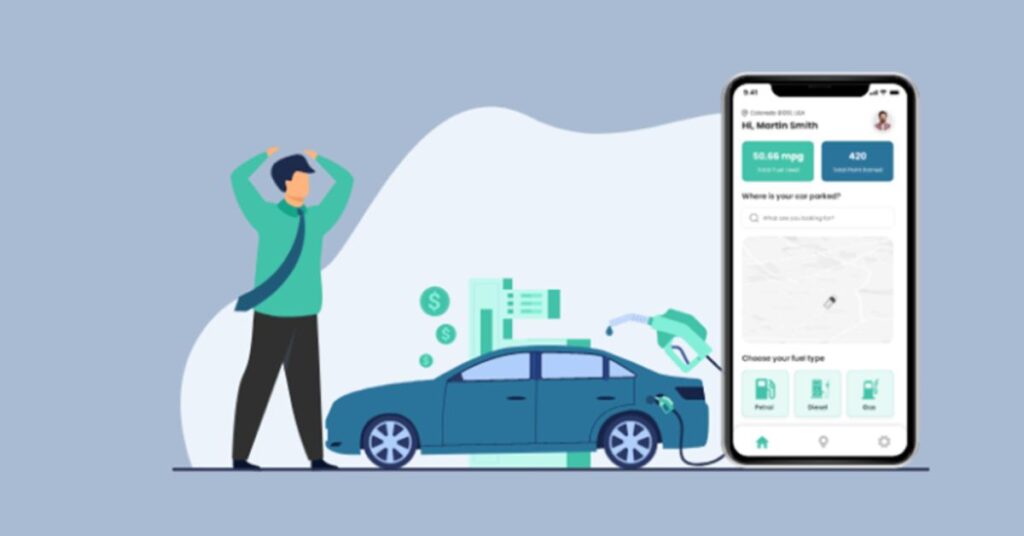The fuel delivery industry is witnessing a transformative shift with the rise of on-demand services. Just as food, groceries, and transportation have been revolutionized by the convenience economy, fuel delivery is now stepping into the spotlight.
This emerging trend is not only reshaping how consumers and businesses refuel but also creating fertile ground for innovation and growth.
In this article, we explore the market trends driving this sector, the opportunities it presents, and the steps involved in building a successful on-demand fuel delivery app.
Understanding On-Demand Fuel Delivery
On-demand fuel delivery services allow consumers to refuel their vehicles or equipment without visiting a gas station. Using a mobile app, users can order fuel to be delivered to their preferred location, whether it’s their home, office, or a construction site.
This service combines the convenience of mobile technology with the necessity of fuel, making it a game-changer in the energy sector.
The process typically involves three key components:
1. Mobile Application:
- The user places an order specifying the type and quantity of fuel.
- Payment is processed securely within the app.
2. Delivery Logistics:
- A fleet of fuel delivery trucks equipped with storage and dispensing systems handles the orders.
- Advanced GPS and route optimization ensure timely delivery.
3. Fuel Provider Partnerships:
- Collaboration with fuel suppliers ensures consistent availability and quality.
This seamless approach is attracting individuals and businesses alike, making fuel delivery a promising market segment.
Market Trends Driving Grow
Several factors contribute to the growing popularity of on-demand fuel delivery services:
1. Convenience Over Traditional Models:
- Busy schedules and long wait times at gas stations drive users toward services that save time and effort.
2. Digital Transformation:
- The proliferation of smartphones and mobile apps has made it easier for consumers to access services at their fingertips.
3. Sustainability Focus:
- Some fuel delivery companies are adopting eco-friendly practices, such as offering biofuels or optimizing delivery routes to reduce emissions.
4. B2B Demand:
- Industries like logistics, construction, and agriculture benefit from reliable, on-site fuel delivery services.
5. Contactless Services:
- The COVID-19 pandemic highlighted the need for safe, contactless service options, accelerating the adoption of fuel delivery apps.
By tapping into these trends, businesses can position themselves as innovative leaders in the fuel delivery space.
Future Opportunities in Fuel Delivery Services
The on-demand fuel delivery market is ripe with opportunities for entrepreneurs and investors. Here’s what the future holds:
1. Integration of Alternative Fuels:
- As electric vehicles (EVs) gain popularity, companies can expand their services to include EV charging stations or portable battery solutions.
- Offering biofuels or hydrogen as alternatives can attract eco-conscious customers.
2. Smart Technology Adoption:
- IoT devices and AI-powered analytics can optimize operations, from inventory management to route planning.
- Predictive analytics can anticipate demand patterns and improve delivery efficiency.
3. Regulatory Support:
- Governments worldwide are exploring regulations to support innovation in this sector, including safety standards and licensing frameworks.
4. B2B Expansion:
- Partnering with businesses in sectors like transportation, logistics, and construction can provide a steady revenue stream.
5. Global Expansion:
- Emerging markets with growing urbanization and smartphone penetration present untapped potential.
Building an On-Demand Fuel Delivery App
Creating a fuel delivery app requires a combination of robust technology, compliance with regulations, and user-friendly design. Here are the key steps:
1. Market Research and Planning:
- Identify your target audience and understand their pain points.
- Analyze competitors to determine unique selling points (USPs).
2. Choosing the Right Features:
- User Registration: Easy sign-up using email, phone, or social media accounts.
- Order Placement: Options to select fuel type, quantity, and delivery time.
- Payment Integration: Secure payment gateways supporting multiple options.
- Real-Time Tracking: GPS-enabled tracking for transparency.
- Notifications: Alerts for order confirmation, delivery status, and promotions.
- Ratings and Reviews: Allow users to share feedback to enhance credibility.
3. Partnering with a Development Team:
- Collaborate with a reliable fuel delivery app development company to ensure high-quality design and functionality.
4. Compliance and Safety Measures:
- Adhere to local regulations for fuel transportation and storage.
- Equip delivery trucks with safety features like fire extinguishers and spill containment systems.
5. Testing and Launch:
- Conduct thorough testing to identify and resolve bugs.
- Launch a minimum viable product (MVP) to gather user feedback before scaling.
Cost to Create a Fuel Delivery App
Thecost to create a fuel delivery app varies depending on factors such as features, design complexity, and technology stack. Here’s a breakdown:
1. App Features:
- Basic features like user registration, order placement, and payment integration typically cost less.
- Advanced features like AI-powered recommendations and predictive analytics add to the budget.
2. Platform Choice:
- Developing for a single platform (iOS or Android) is more cost-effective than creating a cross-platform app.
3. Design Complexity:
- A user-friendly interface with custom designs may require more investment.
On average, developing a feature-rich fuel delivery app starts at $30,000 and can go up to $100,000 or more for advanced functionalities.
Overcoming Challenges in the Industry
While the opportunities are abundant, the on-demand fuel delivery sector faces several challenges:
1. Regulatory Compliance:
- Navigating complex regulations for fuel transportation and storage requires careful planning.
2. High Initial Investment:
- Setting up infrastructure, including delivery trucks and storage facilities, involves significant costs.
3. Building Trust:
- Ensuring consistent fuel quality and timely deliveries is crucial for gaining user trust.
4. Safety Concerns:
- Implementing stringent safety protocols minimizes risks during transportation and delivery.
By addressing these challenges proactively, businesses can establish a strong foothold in the market.
Conclusion
The rise of on-demand fuel delivery services marks a pivotal shift in the energy industry. By leveraging technology and focusing on customer convenience, businesses can tap into this growing market and drive innovation.
Whether you’re an entrepreneur looking to enter the industry or a app development company aiming to create cutting-edge solutions, the future holds immense potential.
With the right strategy, investment, and commitment to quality, you can position yourself at the forefront of this transformative trend. As the demand for convenient, safe, and reliable fuel delivery continues to grow, now is the perfect time to explore opportunities in this dynamic space.







